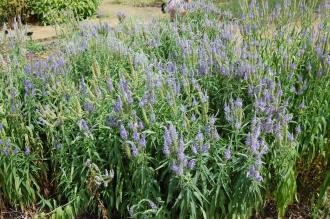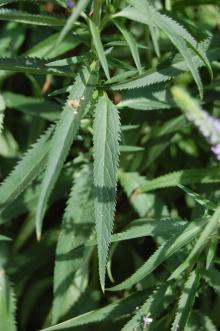
Veronica longifolia (27/07/2103, Kew Gardens, London)
Position: Full sun to light shade
Flowering period: Summer
Soil: Moist, well drained
Eventual Height: 1m
Eventual Spread: 50cm
Hardiness: 4a, 4b, 5a, 5b, 6a, 6b, 7a, 7b, 8a, 8b, 9a
Family: Plantaginaceae

Veronica longifolia Flower (27/07/2103, Kew Gardens, London)
Veronica longifolia is a deciduous herbaceous perennial with an upright habit. Its dark green leaves are lanceolate with serrate margins, up to 10cm long and 1cm broad. Its blue tubular flowers appear as upright spires.
Veronica longifolia, commonly known as the Long Leafed Speedwell, is native to north east and central Europe, south west Asia, north China, Mongolia and Korea. In its native habitat it grows on damp grassy locations and woodland edges.
The etymological root of the binomial name Veronica is named for Saint Veronica, who in Christian mythology gave Christ her veil to wipe his forehead while carrying the cross. Longifolia is derived from the Latin longus meaning long and folius meaning ‘leaf’.

Veronica longifolia Leaf (27/07/2103, Kew Gardens, London)
The landscape architect may find Veronica longifolia useful as part of a mixed herbaceous planting scheme. This perennial is unattractive to deer and rabbits.
Ecologically, Veronica longifolia flowers are attractive to nectar loving insects.
Veronica longifolia prefers moist, fertile, well-drained soils. It tolerates most pH of soil. This plant dislikes dry soils.
Veronica longifolia requires little maintenance. Large clumps may be divided in spring or autumn.

